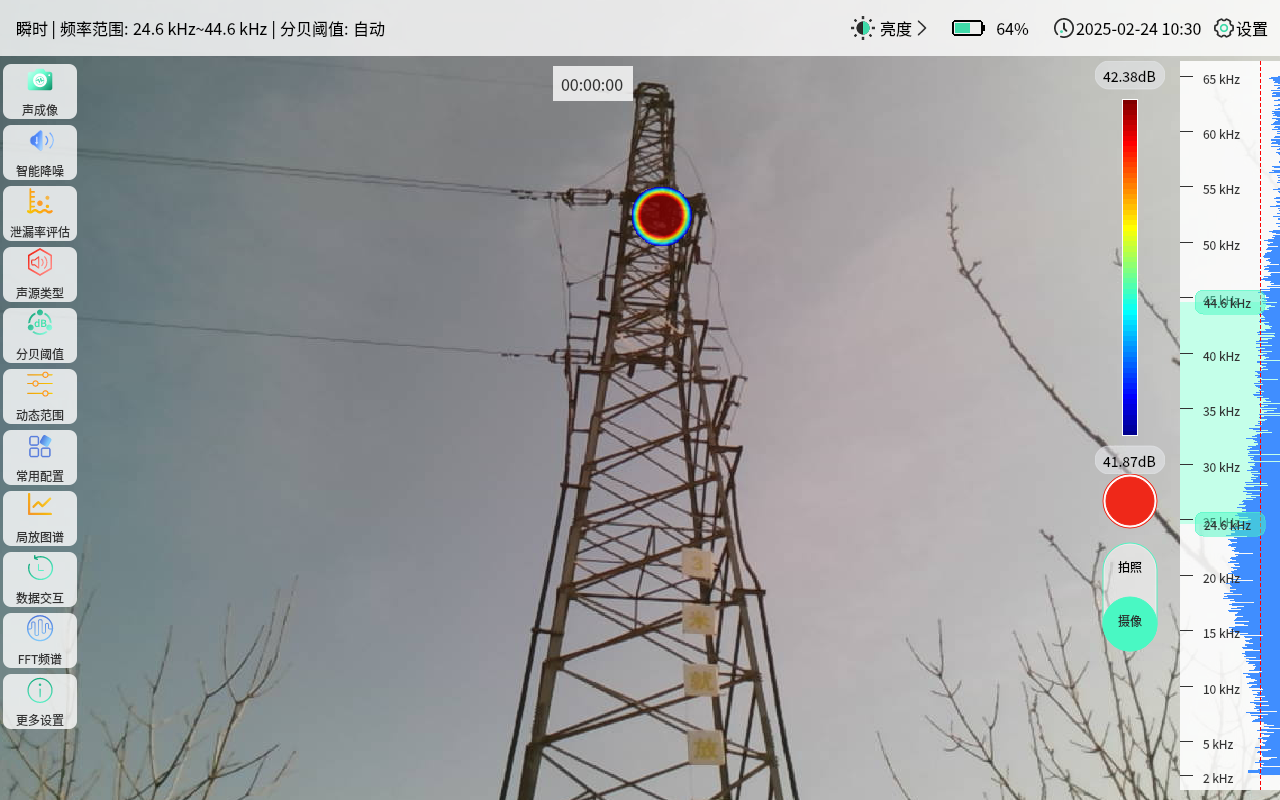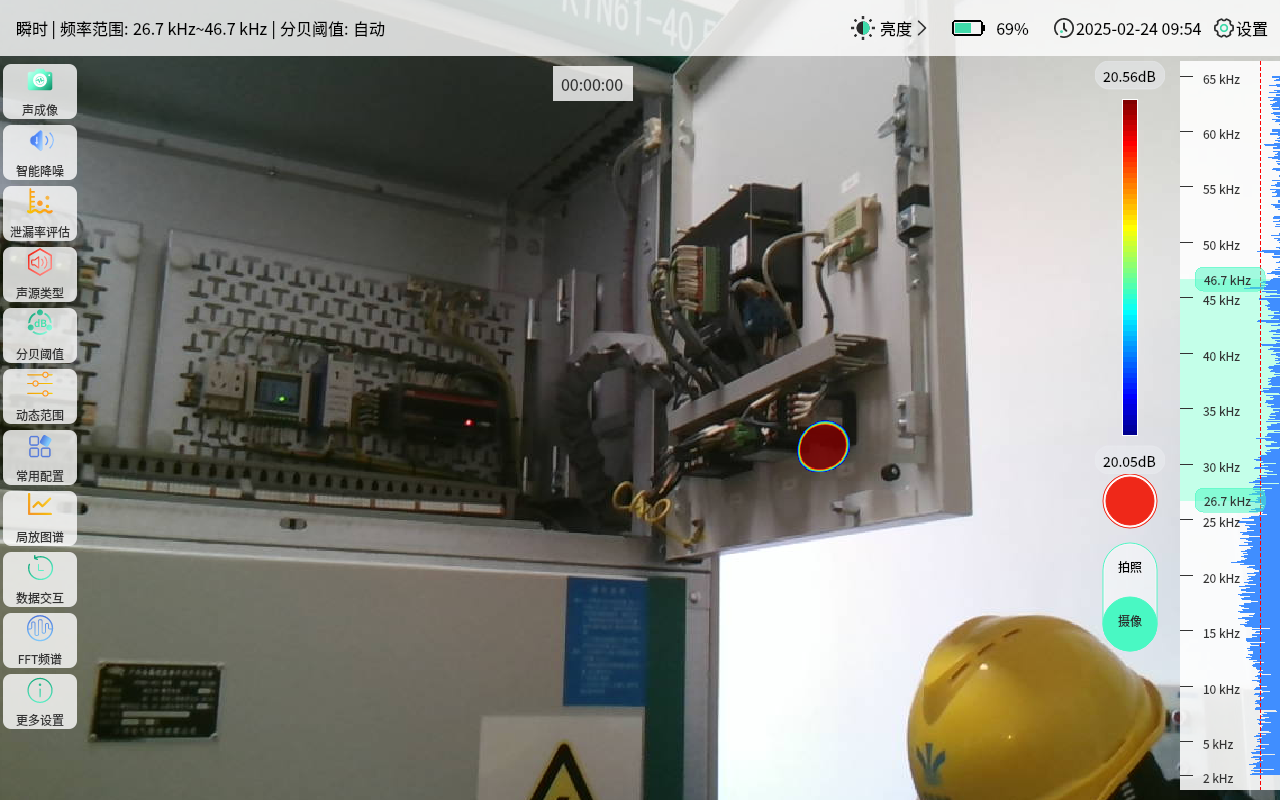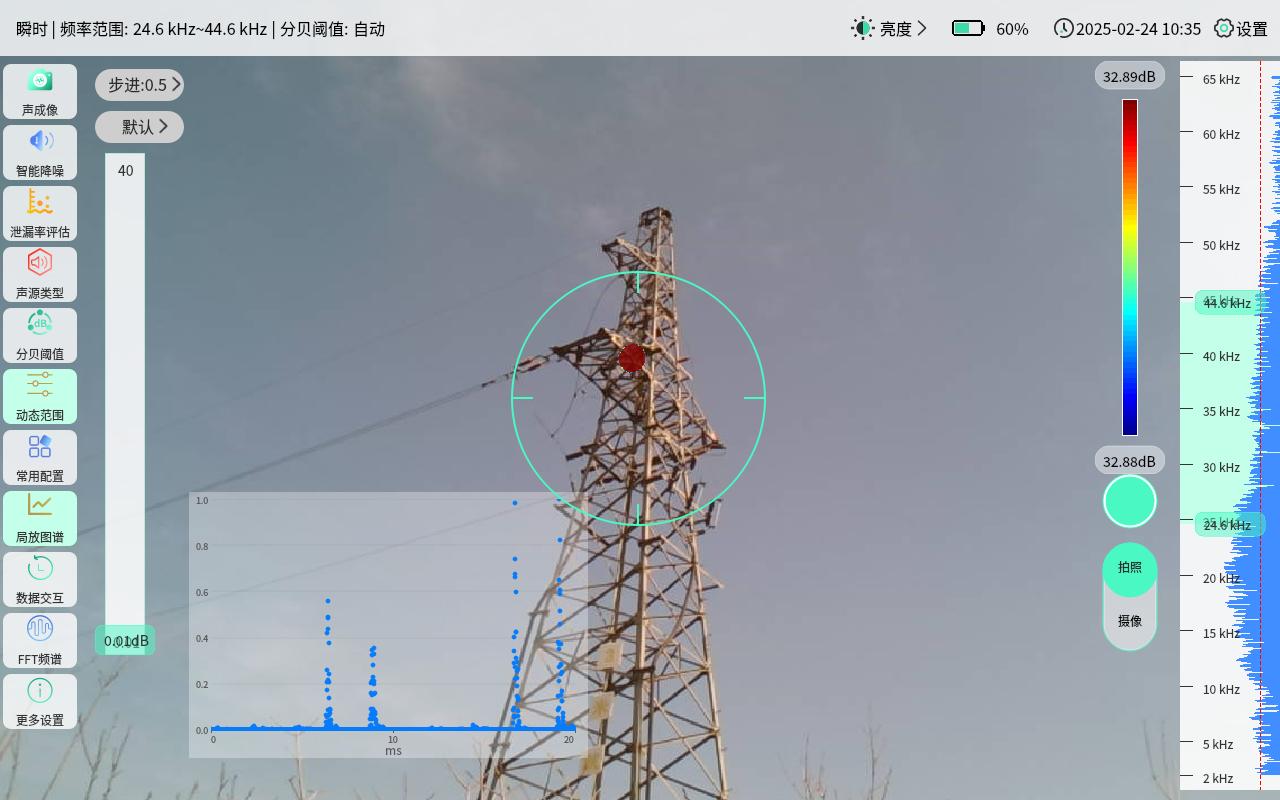Detection advantages
Accurate positioning: It can quickly and accurately determine the specific location of partial discharge, helping maintenance personnel to quickly find the fault point. For example, in large transformers, it can accurately point out the location where the internal partial discharge occurs.
Non-contact detection: There is no need to directly contact the equipment being tested, and detection can be carried out at a certain distance, avoiding interference with the normal operation of the equipment and ensuring the safety of the detection personnel. It is suitable for the detection of high-voltage and high-voltage level equipment.
Real-time monitoring: It can monitor the power equipment in real time online, and timely discover the partial discharge phenomenon that occurs during the operation of the equipment, so as to take timely measures to prevent the further development of the fault and reduce the occurrence of power outages.
Intuitive visualization: The partial discharge is intuitively displayed in the form of images, making the detection results more intuitive and easy to understand. Even non-professionals can easily understand and judge the operating status of the equipment.
Complementary with other detection methods: It can be combined with other electrical equipment detection methods such as infrared thermal imaging detection, ultrasonic detection, and dielectric loss detection to comprehensively judge the operating status of the equipment and improve the accuracy and reliability of detection.
Detection application scenarios
Substation equipment detection: partial discharge detection of transformers, switchgear, GIS (gas insulated switchgear) and other equipment in the substation to promptly detect insulation defects and potential faults inside the equipment.
Transmission line detection: used to detect partial discharge conditions of insulators, cable joints and other parts in the transmission line to ensure the safe operation of the transmission line.
Power plant equipment detection: In power plants, partial discharge detection is performed on rotating electrical machines such as generators and motors, as well as high-voltage distribution equipment to ensure stable operation of the equipment and improve power generation efficiency.







